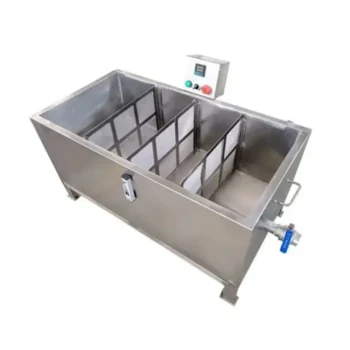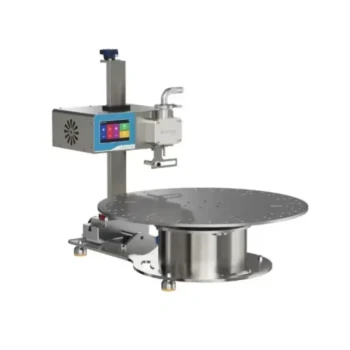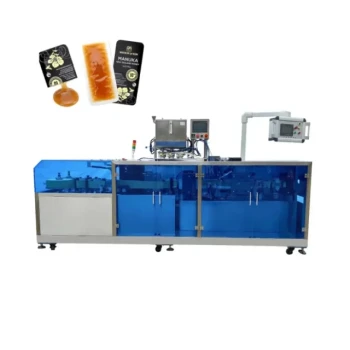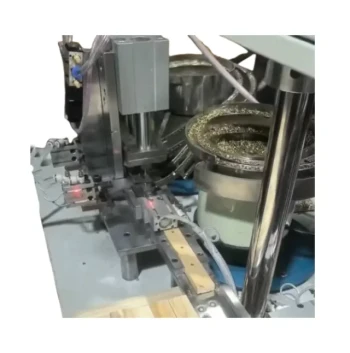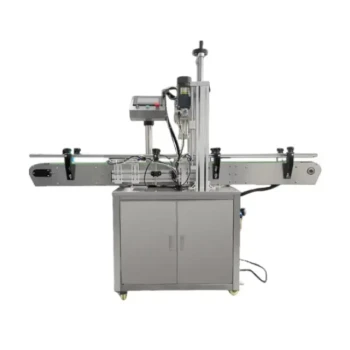In short, a honey filtering machine automates the purification of raw honey. It systematically removes physical impurities like wax, bee parts, and other debris by gently heating the honey to improve its flow and then passing it through a series of progressively finer filters. This process is designed to create a clear, visually appealing, and shelf-stable product ready for bottling.
The central purpose of a honey filtering machine is to bridge the gap between raw, harvested honey and a market-ready product. It enhances honey's clarity, consistency, and shelf life, which are critical factors for commercial success, while increasing the efficiency of the entire production process.
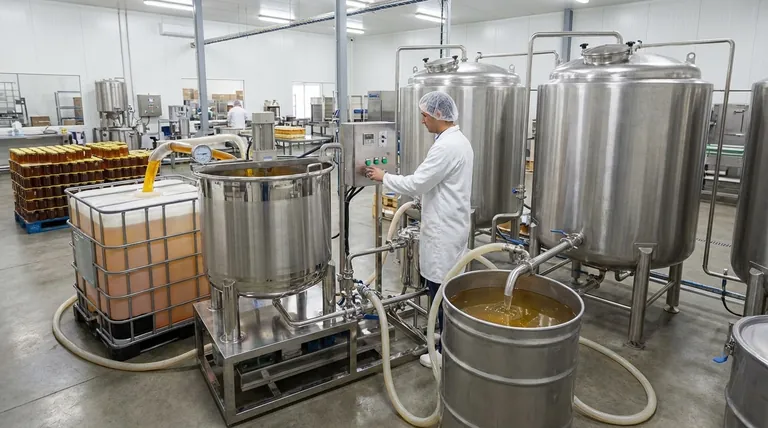
The Core Mechanics of Honey Filtration
A honey filtering machine refines raw honey through a multi-stage process. Each step is engineered to purify the honey without degrading its natural quality.
Gentle Heating and Liquefaction
The process begins by gently heating the honey in a tank. This is not pasteurization. The goal is simply to lower the honey's viscosity and liquefy any sugar crystals that have formed, allowing it to flow smoothly through the filters.
A Progressive Straining System
Once warmed, the honey is passed through a series of mesh screens or filters. These filters are arranged from coarse to fine, systematically removing impurities of different sizes.
The initial filters catch larger debris like wax cappings and bee parts, while subsequent, finer filters trap smaller particles like pollen and dust.
The Role of Pressure
To improve speed and efficiency, especially in larger operations, some machines incorporate pressure systems. This pressure helps push the thick honey through the fine mesh filters more quickly than gravity alone would allow, significantly increasing the volume that can be processed.
Why Filtration is Crucial for Honey Quality
Filtering is not just about cleaning; it's a critical step in defining the final product's quality and marketability. It addresses the key attributes that consumers notice first.
Enhancing Visual Appeal and Clarity
The primary benefit is improved clarity. By removing suspended particles, sugar crystals, and air bubbles, the machine produces the crystal-clear honey that consumers often prefer. This uniform appearance enhances the product's appeal on a retail shelf.
Creating a Consistent Texture
Filtering ensures a smooth, consistent texture by removing all solid particles. This eliminates the gritty or uneven mouthfeel that can be caused by bits of wax or crystallized sugar, resulting in a higher-quality final product.
Extending Shelf Life
Impurities like pollen grains and dust can act as nucleation points, encouraging and accelerating the natural process of crystallization. By removing these particles, a filtering machine helps the honey remain in a liquid state for much longer, extending its shelf life.
Understanding the Trade-offs
While filtration is essential for commercial honey, it's important to understand the balance between purity and the "raw" state. The level of filtration directly impacts the final product's characteristics.
The Impact on Pollen
Very fine filters can remove most of the pollen from honey. For beekeepers marketing their product as "raw" or "unfiltered," this is a critical consideration. The choice of filter mesh size allows a producer to control how much pollen remains.
Preserving Natural Enzymes
The gentle heating used in filtration is specifically designed to avoid damaging the natural enzymes and delicate flavors present in raw honey. This distinguishes it from pasteurization, which uses much higher temperatures that can degrade these beneficial properties.
Efficiency for Scaled Operations
For any commercial beekeeping operation, a filtering machine offers a dramatic increase in efficiency. It can process a large volume of honey far more quickly and with less labor than manual straining methods, making it a cost-effective and necessary investment for growth.
Making the Right Choice for Your Goal
The right filtration strategy depends entirely on the product you want to create and the market you want to serve.
- If your primary focus is artisanal, raw honey: Use coarser filters to remove only large debris, intentionally preserving the pollen and natural cloudiness that signals an unprocessed product.
- If your primary focus is commercial retail: Employ a system with finer filters to achieve the high clarity and long shelf life required to compete in a supermarket environment.
- If your primary focus is operational efficiency: Investing in a machine with a pressure system is the most direct way to reduce labor costs and increase your processing capacity as your operation scales.
Ultimately, mastering the filtration process empowers you to precisely control the final product, ensuring it meets the exact standards your customers expect.
Summary Table:
| Function | Benefit |
|---|---|
| Removes Impurities | Eliminates wax, bee parts, and debris for a clear, clean product. |
| Gentle Heating | Improves flow without pasteurization, preserving natural enzymes. |
| Progressive Filtration | Uses coarse to fine filters for systematic purification. |
| Extends Shelf Life | Reduces nucleation points, slowing crystallization. |
| Increases Efficiency | Processes large volumes quickly, reducing manual labor. |
Ready to scale your honey production with professional-grade equipment?
HONESTBEE supplies commercial apiaries and beekeeping equipment distributors with the robust, high-capacity honey filtering machines and supplies needed to ensure product quality and maximize operational efficiency. Let us help you choose the perfect filtration system for your specific goals.
Contact our wholesale experts today to discuss your needs and get a quote!
Visual Guide
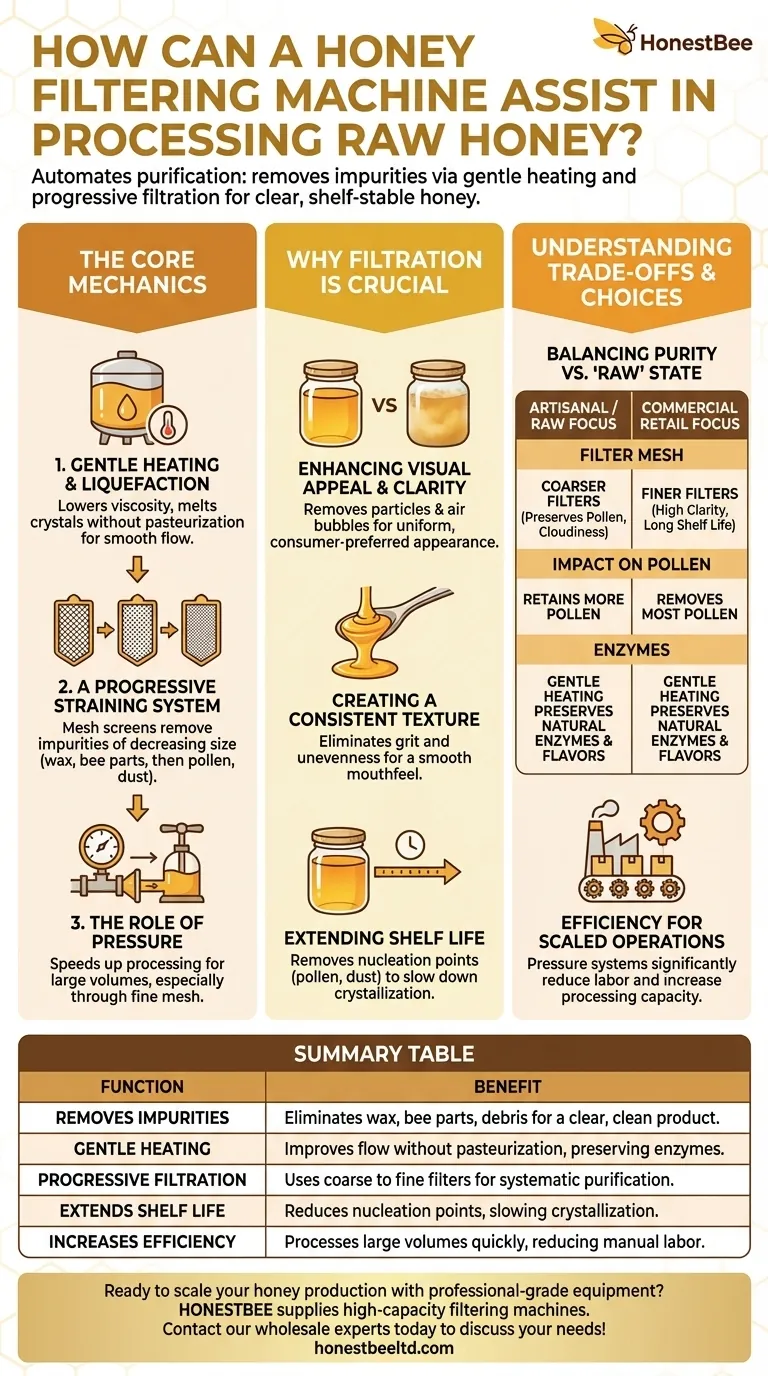
Related Products
- Electric Double Wall Honey Filtering Machine Purifier Equipment for Honey Processing Plant
- Professional Stainless Steel Honey Filtering Machine with Water Bath Heating for Beekeeping
- Fully Automatic Honey Filling Packaging Machine for Processing Line
- Automatic Honey Filling and Filtering Machine for Beekeeping Bottle Filling
- Manual Honey Filling Machine Bottling Machine for Honey
People Also Ask
- What is the primary purpose of a honey filtering machine? Purify & Market Your Honey Efficiently
- What bottling equipment is used after honey filtering? Choose the Right System for Your Scale
- What role does a honey filtering machine play in extending the shelf life of honey? Prevent Crystallization & Fermentation
- What happens during the spinning process in honey extraction? Efficiently Harvest Honey & Preserve Comb
- What is a machine used for extracting honey? Master the Art of Efficient Honey Harvesting

